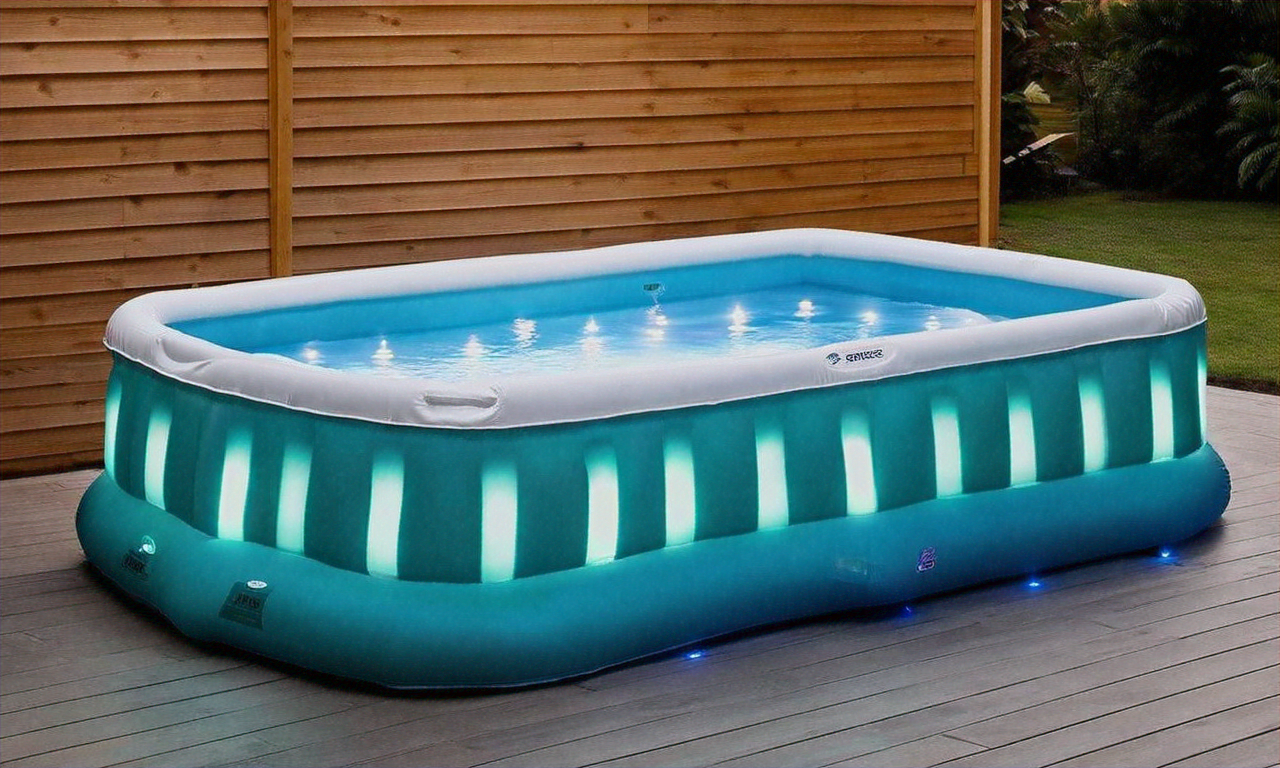Understanding Above-Ground Pools
Refreshingly above-ground pools have rapidly gained popularity among homeowners looking to revamp their outdoor spaces into vibrant retreats. With innovative designs and durable materials, these pools not only provide a fun and relaxing atmosphere but also lend a unique touch to any backyard. Available in various shapes and styles, refreshingly above-ground pools cater to a wide array of preferences, ensuring that every family can find the perfect fit.

What Are Above-Ground Swimming Pools?
Above-ground swimming pools are freestanding structures that sit on top of the ground rather than being excavated into it. These pools typically consist of a metal, resin, or hybrid frame with a vinyl liner that holds the water. They come in various shapes including round, oval, and rectangular designs, with sizes ranging from small personal pools to large family-sized installations. The construction process is significantly simpler than in-ground pools, often requiring only a level surface, proper ground preparation, and assembly of the frame and liner components. Many models can be installed within a few days, making them an attractive option for those who want to start enjoying their pool quickly without lengthy construction projects disrupting their property.
Mini Above-Ground Swimming Pools for Compact Spaces
Mini above-ground swimming pools have gained popularity among homeowners with limited yard space or those seeking a more budget-friendly entry point into pool ownership. These compact models typically range from 10 to 15 feet in diameter and can accommodate small families or serve as personal relaxation spaces. Despite their smaller footprint, mini pools still provide excellent opportunities for cooling off during hot weather, light exercise, and family fun. They require less water to fill, reducing initial setup costs and ongoing chemical expenses. Installation is often straightforward enough for determined DIY enthusiasts, though professional setup ensures proper leveling and longevity. The smaller size also means easier winterization and maintenance, making them ideal for first-time pool owners or those who prefer a manageable commitment.
Texas-Style Swimming Pools and Regional Considerations
Texas-style swimming pools often refer to larger, more robust above-ground installations designed to withstand the intense heat and extended swimming seasons common in southern climates. These pools typically feature reinforced frames, UV-resistant materials, and enhanced filtration systems to handle higher usage and warmer water temperatures. In regions with hot climates, above-ground pools benefit from strategic placement that considers sun exposure, wind patterns, and proximity to the home for convenient access. Many Texas homeowners opt for larger oval or rectangular models that can accommodate multiple swimmers and include features like built-in steps, deck attachments, and shade structures. The extended swimming season in warmer climates makes the investment more practical, as families can enjoy their pools from early spring through late fall, maximizing the value and enjoyment of their purchase.
Pool Platform Selection and Ground Preparation
Proper pool platform selection is critical for the longevity and safety of your above-ground swimming pool. The foundation must be completely level, stable, and free of rocks, roots, or debris that could puncture the liner or cause structural issues. Common platform options include compacted sand bases, foam padding systems, concrete pads, and specialized pool base materials. Sand is the most traditional choice, providing a smooth, level surface when properly compacted and graded. Foam pads offer additional cushioning and insulation, helping protect the liner and maintain water temperature. Concrete pads provide the most stable and permanent foundation but come with higher installation costs. The ground should be cleared and leveled within one inch across the entire pool area, as even minor slopes can cause water pressure imbalances that stress the pool walls and create uneven water levels that affect both aesthetics and structural integrity.
Above-Ground Swimming Pool Models and Features
Above-ground swimming pool models vary widely in construction quality, materials, features, and price points. Entry-level models typically feature steel frames with basic vinyl liners and simple filtration systems, suitable for seasonal use and lighter traffic. Mid-range options often incorporate resin components that resist rust and corrosion, along with thicker liners and more powerful filtration equipment. Premium models may include hybrid frames combining steel strength with resin durability, decorative exteriors that mimic stone or wood, and advanced features like saltwater systems, LED lighting, and integrated heating. Round pools are the most economical and structurally sound due to even water pressure distribution, while oval and rectangular models offer more swimming space but require additional support structures. Depth typically ranges from 48 to 54 inches, with some models offering deeper options for diving or more serious swimming.
Cost Considerations and Product Comparisons
When evaluating above-ground swimming pools, understanding the cost structure helps in making informed decisions. Prices vary significantly based on size, materials, features, and installation requirements. Basic round pools in smaller sizes may start around 1,000 to 2,000 dollars for the pool kit alone, while larger premium models with advanced features can range from 3,000 to 8,000 dollars or more. Installation costs, if hiring professionals, typically add 500 to 2,000 dollars depending on complexity and site preparation needs. Ongoing expenses include chemicals, electricity for pumps and filters, water, and eventual liner replacement every 5 to 10 years.
| Pool Type | Typical Size Range | Estimated Cost Range | Key Features |
|---|---|---|---|
| Basic Steel Frame | 12-18 feet round | 1,000 - 2,500 dollars | Simple construction, seasonal use, standard liner |
| Resin Frame | 15-24 feet round | 2,000 - 4,500 dollars | Rust-resistant, longer lifespan, better aesthetics |
| Hybrid Frame | 18-30 feet oval | 3,500 - 7,000 dollars | Steel and resin combination, enhanced durability |
| Premium Package | 24-33 feet oval | 5,000 - 10,000 dollars | Saltwater systems, LED lights, decorative exterior |
Prices, rates, or cost estimates mentioned in this article are based on the latest available information but may change over time. Independent research is advised before making financial decisions.
Maintenance and Long-Term Ownership
Maintaining an above-ground swimming pool requires regular attention but is generally less demanding than in-ground pool care. Daily tasks include checking water levels, skimming debris, and monitoring filtration system operation. Weekly maintenance involves testing and balancing water chemistry, vacuuming the pool floor, and cleaning the filter. Proper chemical balance prevents algae growth, maintains water clarity, and protects the liner from deterioration. Seasonal tasks include opening the pool in spring with thorough cleaning and chemical adjustment, and winterizing in fall by lowering water levels, adding winter chemicals, and covering the pool to protect it from debris and weather damage. Liner replacement is the most significant long-term expense, typically needed every 5 to 10 years depending on usage, chemical balance, and sun exposure. Regular inspections of the frame, supports, and fittings help identify potential issues before they become serious problems, extending the overall lifespan of your investment.
Above-ground swimming pools offer an accessible pathway to backyard recreation, combining affordability with flexibility and relatively straightforward maintenance. By carefully considering your space, climate, budget, and desired features, you can select a model that provides years of enjoyment for your family while avoiding the permanence and expense of traditional in-ground installations.




